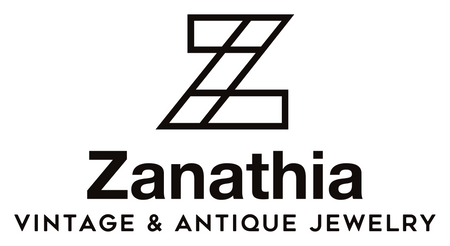The 19th century Victorian Era (c.1837-1901) was an extended period emphasizing various symbolic memento trends. Many Victorian accessories often feature sentimental designs, which include religious and mythological references. One supplement, the sweetheart bracelet, has an intriguing history that is both sweet and immensely symbolic.
Victorian Sweetheart bracelets were trendy memento sentimental accessories during the Victorian Era and early 20th century.
Originally, sweetheart bracelets were gifted to children, many of which contained paste stones and engraved initials. The trend became rather popular among women, and soon adult sizes were being manufactured. After the Industrial Revolution boom, jewelry companies created many lightweight gold-plated items with various designs. Bracelets were a popular fashion choice, and many designs contained sentimental memento gestures to honor loved ones. When identifying and collecting antique sweetheart bracelets, some of the earliest models have hidden compartments for a loved one's hair strand or photo. During the Civil War (1861-1865), sweetheart bracelets were worn by relatives of the soldiers. Engraved initials and symbols can be seen on antique sweetheart bracelet designs. These fascinating symbols include two hands clasping each other for an everlasting bond, white enamel honoring unmarried women and children, and grape leaves representing rebirth.

Victorian Era, expandable bracelets with white enamel could often symbolize remembering unmarried women and children. These bracelets are often called sweetheart bracelets, but the term initially began to be used for D.F. Briggs Co. and McRae and Keeler Sweetheart Shaped Bracelets.
Several companies began manufacturing expandable monogrammed and memento bracelets during the Victorian Era. However, the term 'sweetheart' is synonymous with the heart-shaped stretch bracelets created by the D.F. Briggs Company and McRae and Keeler Company. Both companies were founded in Attleboro, Massachusetts, and created their expandable bracelets with heart-shaped stones in the center. The heart-shaped center was often made with paste such as glass or semiprecious stones like Amethyst and Ruby. The D.F. Briggs Company, established in 1882, named their sweetheart bracelets 'Carmen.' McRae and Keeler Company, based in 1883, called manufactured its bracelets as 'American Queen.' In 1907, McRae and Keeler changed their name to Pitman and Keeler, while the D.F. Briggs Company began to market their jewelry under 'Briggs, Bates, and Bacon Company in 1922. This is important when identifying when specific sweetheart models were created. Both companies continued to develop their signature sweetheart bracelets during World War 2. Service members often sent heart-shaped mementos to loved ones, including decorated military emblems. Both D.F. Briggs, McRae, and Keeler Companies began to create sets for military sweethearts and loved ones. Their bracelets during his period have different designs than earlier antique models.

Antique Edwardian WWI Era D.F. Briggs Company Sweetheart Bracelet
Up-close Hallmark of Antique Edwardian Era D.F. Briggs Co Sweetheart Bracelet. ‘The D.F.B Co.,’ ‘Carmen,’ and ‘Made In The U.S’
In today's market, sweetheart bracelets are highly collectible, and their quality craftsmanship has also allowed them to be a practical modern statement accessory. Many sweetheart bracelets' symbolic meanings and sentimental purposes are still admirable and greatly appreciated. Sweetheart bracelets allow present-day collectors to own a valuable piece of history, which often includes significant American wars and the families of the dearly departed. These sentimental gifts were a part of tender historical memories and lives, which are essential to preserving.





